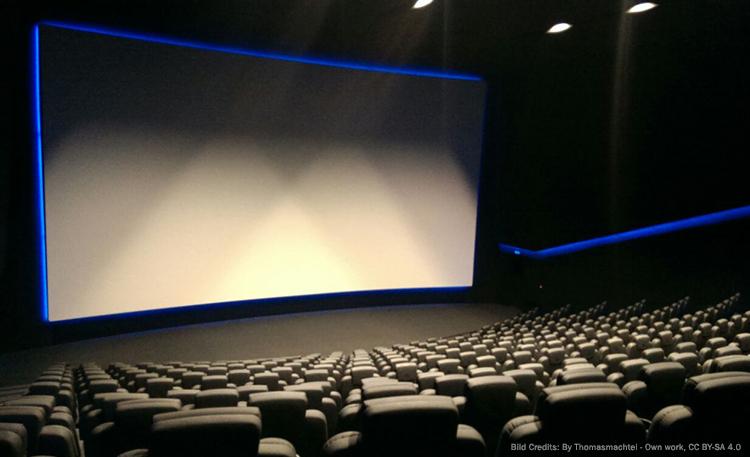Carleton College recently hosted an insightful exploration into the rich cinematic landscapes of Chile and Argentina, spotlighting the intricate relationship between film and storytelling in these two South American nations. The event shed light on how Chilean and Argentine filmmakers have used cinema not only as a medium of artistic expression but also as a powerful tool for cultural reflection and social commentary. From the haunting narratives born out of historical upheavals to contemporary stories that challenge prevailing norms, the discussion underscored the dynamic role of cinema in shaping and preserving national identities.
Cinema as a Mirror of Social Change in Chile and Argentina
Throughout the turbulent decades marked by dictatorship, economic crises, and social upheaval, film in Chile and Argentina has emerged as a powerful medium reflecting the evolving collective consciousness. Directors and screenwriters have consistently engaged with pressing societal themes, using cinema to document and interrogate issues such as human rights abuses, class struggle, and cultural identity. This artistic form transcends mere storytelling; it serves as a cultural archive where personal and national memories intersect, challenging audiences to confront both the legacies of the past and the complexities of contemporary life.
Key characteristics shaping this cinematic dialogue include:
- Revealing truths through personal narratives: Many films foreground intimate stories that humanize broader political conflicts and social transformations.
- Experimentation with form and genre: From documentary realism to surrealist symbolism, filmmakers manipulate narrative techniques to capture the nuanced textures of social change.
- Transnational influences and collaborations: Shared histories and cross-border exchanges enrich the depiction of identity and resistance across both countries.
| Decade | Major Social Event | Notable Film Theme | Representative Film |
|---|---|---|---|
| 1970s | Military dictatorships | State repression, exile | Missing (1982) |
| 1980s | Return to democracy | Memory, justice | The Official Story (1985) |
| 2000s | Economic instability | Social inequality, migration | Machuca (2004) |
Exploring Narrative Techniques That Define Regional Storytelling
Chile and Argentina have cultivated distinctive narrative styles in their cinema, often reflecting the sociopolitical landscapes and cultural complexities unique to each country. Chilean storytelling frequently embraces a minimalist, intimate perspective, deploying poetic realism and fragmented timelines to evoke personal and collective memory. This approach invites audiences to engage deeply with characters’ internal struggles and historical traumas, such as dictatorship and displacement, through subdued yet pointed visual metaphors.
Conversely, Argentine cinema is renowned for its vibrant blend of magical realism and social commentary, often delivered via nonlinear narratives or multi-layered plots. Filmmakers employ a variety of tools including:
- Nonchronological storytelling to mirror the fluidity of memory and time
- Character-driven allegories that critique political oppression while celebrating resilience
- Visual symbolism rooted in urban and rural landscapes, amplifying the tension between tradition and modernity
| Technique | Chile | Argentina |
|---|---|---|
| Temporal Structure | Fragmented, episodic | Nonlinear, cyclical |
| Emphasis | Introspective memory, trauma | Social critique, resilience |
| Visual Style | Minimalist, muted tones | Symbolic, vibrant hues |
| Common Themes | Dictatorship aftermath, exile | Urban struggle, identity |
Recommendations for Preserving Cultural Authenticity in Film Narratives
To maintain the genuine essence of cultural narratives in cinema, filmmakers must engage deeply with local communities, ensuring their stories are told with respect and accuracy. Collaborating with cultural consultants and historians can pave the way for narratives that avoid stereotypes and honor the complexities of traditions and identities. Additionally, prioritizing native languages and dialects, alongside authentic settings, enriches the viewer’s experience and preserves the cultural fabric within the cinematic landscape.
Key practices for filmmakers include:
- Incorporating indigenous perspectives through direct involvement
- Avoiding cultural appropriation by thorough research and sensitivity
- Highlighting underrepresented voices within the community
- Emphasizing regional music, attire, and customs authentically
| Aspect | Recommendation | Benefit |
|---|---|---|
| Language | Use local dialects with subtitles | Enhances authenticity and relatability |
| Community Involvement | Consult cultural experts and elders | Ensures accuracy and respect |
| Visual Elements | Feature traditional clothing and environments | Preserves visual heritage |
Final Thoughts
As Chile and Argentina continue to produce films that resonate both locally and internationally, their cinemas remain vital platforms for storytelling that reflect complex social realities, cultural identities, and historical narratives. Through diverse genres and bold artistic visions, filmmakers from these neighboring countries contribute significantly to the global cinematic landscape. For students and scholars at Carleton College and beyond, exploring cinema in Chile and Argentina offers invaluable insights into how storytelling shapes and is shaped by the unique contexts of Latin America.




